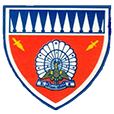| No | Unit | Formed | Disbanded | Notes |
|---|
| 1 | 1st Battalion, Gemunu Watch | 7 December 1962 | | |
| 2 | 2nd (V) Battalion, Gemunu Watch | 1 October 1964 | | |
| 3 | 3rd (V) Battalion, Gemunu Watch | 1 September 1965 | | |
| 4 | 4th Battalion, Gemunu Watch | 27 December 1985 | | |
| 5 | 5th Battalion, Gemunu Watch | 1 June 1987 | | First unit to be formed in the battle field, Vasavilan Jaffna. First commanding officer was Lieutenant Colonel G.W.W. Perera. |
| 6 | 6th Battalion, Gemunu Watch | 22 May 1990 | | First commanding officer was Major M.M. Sumanasena |
| 7 | 7th Battalion, Gemunu Watch | 17 September 1992 | | On 13 June 2000, this unit was amalgamated with 5 Gemunu Watch and on 17 May 2005 the Battalion was re-designated as the 7th Battalion |
| 8 | 8th Battalion, Gemunu Watch | 28 January 1993 | | 8 Gemunu Watch was amalgamated with the 6 Gemunu Watch on 9 June 2000 and on 17 May 2005, 8 Gemunu Watch re-commenced working as an independent Unit once again. |
| 9 | 9th Battalion, Gemunu Watch | 24 January 1994 | | On 18 June 2000, 9 Gemunu Watch was amalgamated with 1 Gemunu Watch and on 24 January 2002 it re-commenced functioning independently |
| 10 | 10th (V) Battalion, Gemunu Watch | 1 June 1994 | | |
| 11 | 11th Battalion, Gemunu Watch | 4 September 1996 | | On 17 May 2005, 11 Gemunu Watch was renamed as 7 Gemunu Watch. Later this Unit once more became 11 Gemunu Watch on 4 October 2007. |
| 12 | 12th Battalion, Gemunu Watch | 1 January 1997 | | 12 Gemunu Watch was amalgamated with 4 Gemunu Watch on 12 June 2000, but became an independent Unit on 11 November 2002. |
| 14 | 14th (V) Battalion, Gemunu Watch | 7 January 1997 | | |
| 15 | 15th (V) Battalion, Gemunu Watch | 1 December 2007 | | |
| 16 | 16th (V) Battalion, Gemunu Watch | 9 May 2008 | | |
| 17 | 17th Battalion, Gemunu Watch | 16 October 2008 | | |
| 18 | 18th Battalion, Gemunu Watch | 1 December 2008 | | |
| 19 | 19th Battalion, Gemunu Watch | 12 January 2009 | | |
| 20 | 20th (V) Battalion, Gemunu Watch | 7 March 2009 | 21 November 2018 | |
| 21 | 21st (V) Battalion, Gemunu Watch | 1 May 2009 | 15 November 2018 | |
| 22 | 22nd (V) Battalion, Gemunu Watch | 29 July 2009 | 13 March 2012 | |
| 23 | 23rd Battalion, Gemunu Watch | 15 October 2009 | | |
| 24 | 24th Battalion, Gemunu Watch | 9 November 2009 | | |
| 25 | 25th Battalion, Gemunu Watch | 25 September 2010 | | 1st Reinforcement [RFT] Battalion formed on 25 September 2008 was renamed as 25 Battalion, Gemunu Watch on 25 September 2010 |
| 26 | 26th Battalion, Gemunu Watch | 20 September 2010 | 25 April 2012 | 2nd RFT Battalion of the Gemunu Watch formed on 31 January 2009 was renamed as 26 Gemunu Watch on 20 September 2010. |
| 27 | 27th Battalion, Gemunu Watch | 20 September 2010 | 25 February 2012 | 3rd RFT Battalion of the Gemunu Watch formed on 16 April 2009 was re-designated as 27 Gemunu Watch on 20 September 2010. |
| 28 | HQ BN Battalion, Gemunu Watch | | | Initially formed as RFT Battalion of the Gemunu Watch on 17 January 1998. On 8 October 1999, the RFT Battalion was renamed the Headquarter Battalion. |
|

